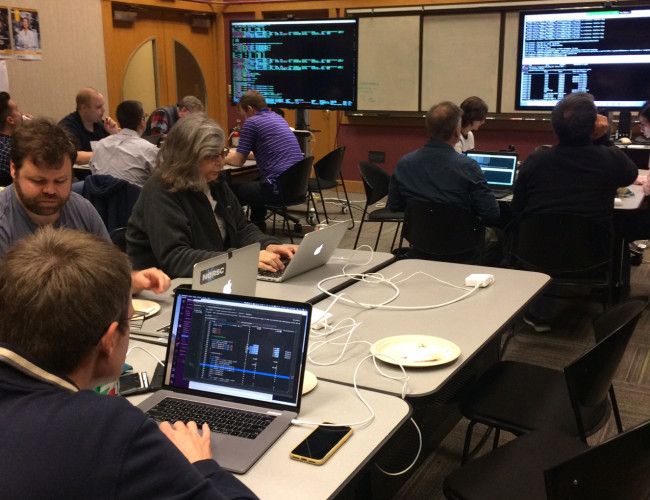LANL is hosting a Building GPU-Accelerated Differentiable Simulations with NVIDIA Warp Python training, presented by Eric Shi from Nvidia. This event is open to NERSC users.
Description
Warp is a Python framework designed to author high-performance, GPU-accelerated code directly in Python. At its core, Warp uses a programming model where Python functions are just-in-time (JIT) compiled into efficient code that can run on both CPUs and NVIDIA GPUs, using C++/CUDA as an intermediate representation. This approach lets developers harness GPU performance while maintaining Python's simplicity and flexibility.
Warp also features a reverse-mode automatic differentiation system, enabling gradient-based optimization across diverse applications. Researchers and developers have applied Warp across domains such as physics simulation, perception, robotics, geometry processing, and other computationally demanding fields where Python’s ease of use, combined with GPU performance, is desired.
This course will consist of lectures and hands-on exercises in Jupyter notebooks (subject to GPU availability) designed to teach participants how to develop their own GPU-accelerated Python applications using Warp, emphasizing performance optimization and differentiable programming techniques.
Topics covered
- Warp fundamentals: Design principles, key modules, arrays, and kernels
- Performance optimization strategies: Graphs, streams, and events, multi-GPU, multi-node
- (New) Using the recently introduced tile-based programming model
- Automatic differentiation in Warp and writing differentiable simulators
- Interoperating Warp with PyTorch and JAX
Prerequisites
Familiarity with Python is highly recommended. Some knowledge of automatic differentiation, GPU computing, and PyTorch or JAX is beneficial but not required for all course sections.
Speaker bio
Eric Shi is a Senior Engineer at NVIDIA on the Warp team. His current focus is improving Warp’s support for distributed and scientific computing. He received his PhD from Princeton University’s Program in Plasma Physics in 2017. Before joining NVIDIA in 2022, he worked as a design and computational physicist at LLNL.
